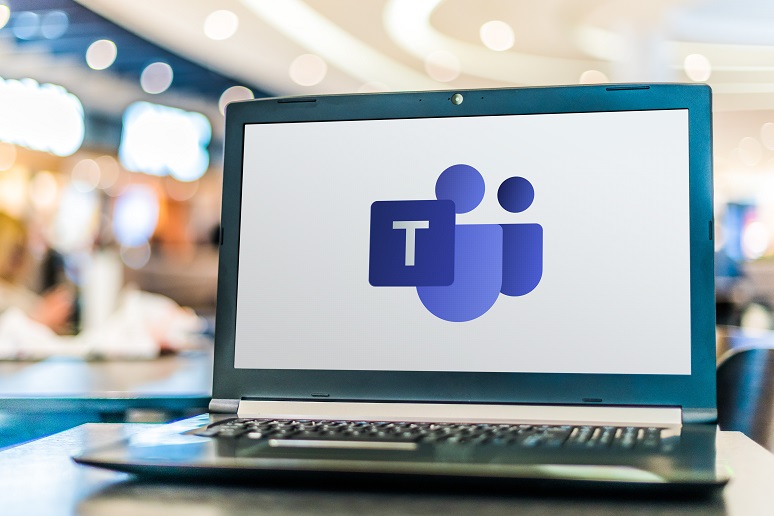In the latest in its ongoing series of incremental improvements,
Microsoft continued its momentum with Teams enhancements designed to streamline and improve the experience for in-office and work-from-home users.
Together Mode, Platform Enhancements
With a stated aim of making video meetings more natural, Microsoft unveiled
Together mode — a meeting experience that uses AI segmentation technology to place each meeting participant in a shared virtual background, rather than in their own windows. A large meeting, single speaker meeting, for example, might use an auditorium-style background, with each participant appearing to be seated in a theater. For a small team meeting, a coffee bar background might work. Microsoft is offering Together mode in limited availability now, with GA to follow in August.
A slew of other enhancements includes:
- Meetings for 1,000 participants and more — To meet the demand for larger video meetings, Microsoft is working on support for live interactive meetings during which up to 1,000 participants will be able to chat, mute/unmute, and turn on video; it already supports view-only meetings for up to 20,000 participants
- Microsoft Whiteboard features —Enhancements like sticky notes, text, and drag-and-drop capabilities will allow meeting participants who don’t have access to a touchscreen device or Microsoft Surface Hub to participate in Teams whiteboarding sessions, Microsoft said.
- Cortana support for Teams mobile app — Users will be able to make a call, join a meeting, send chat messages, share files, and more via voice commands. Cortana for the Teams mobile app will first be available in English on iOS and Android in the coming weeks for Microsoft 365 Enterprise users in the U.S., Microsoft said.
- Dynamic view for meetings —With dynamic view, users have the ability to show shared content and specific participants side-by-side, Microsoft said.
- Tasks app — Set to roll out this month, the Tasks app provides a single view for tasks across Microsoft To Do, Planner, and Outlook; the app can be accessed from either the desktop, web, or mobile experience, according to Microsoft.
- Suggested replies — Through assistive AI capabilities, Teams chat will now suggest replies based on previous messages. This feature will roll out this month, according to Microsoft.
- Video filters — Similar to social media filters, Teams users can apply a filter to adjust lighting levels and soften the focus of the camera.
- Reflect messaging extension — Available in the coming weeks, the Reflect messaging extension from GitHub will allow managers to check-in to see how users are doing. The extension features suggested check-in questions and the ability to create polls and custom questions.
- Live reactions — Users will soon be able to react to meeting participants with emojis, which will appear to all participants. Live reactions is a shared feature with PowerPoint Live Presentations, which will come to Teams in the future, Microsoft said.
- Chat bubbles — In Teams meetings, participants have to open the chat window to send and view messages. Now, with chat bubbles, they’ll be able to send messages directly within a meeting window, eliminating the need to toggle over to the chat interface.
- Speaker attribution for live captions and transcripts — Teams will soon add speaker attribution to transcriptions and captions. Following a meeting, a transcription file will also be saved to a new meeting tab, according to Microsoft.
From Home Offices to Return to Office
In addition to platform enhancements, Microsoft made a pair of announcements designed to improve WFH setups and prepare enterprises for the
return to the office.
For devices, Microsoft introduced its latest category of all-in-one Teams dedicated devices, Microsoft Teams display. The devices will feature Cortana and can be integrated with PCs, according to Microsoft. The Lenovo ThinkSmart View will be the first Microsoft Teams display device, followed by a Yealink device, which will both be available in the U.S. later in the year.
For Teams rooms, a new room remote via the Teams mobile app will provide enterprises with more touchless meeting experience options. With the room remote, users will have the ability to control a room, allowing them to mute/unmute a room, adjust volume, turn cameras on/off, and leave the room, according to Microsoft. Additionally, voice assistance for Microsoft Teams Room devices via Cortana will allow meeting room participants to add a participant from an address book, leave a meeting, and more, according to Microsoft. Both the voice assistance and the room remote will come later this year, with voice assistance launching first for Microsoft 365 Enterprise users in the U.S.
Get further insight into working with Microsoft Teams at Enterprise Connect Digital Conference & Expo 2020, which takes place Aug. 3-6. In the "Cisco vs. Microsoft vs. Zoom: Clearing the WFH Fog" premium session, UC analysts Brent Kelly and Phil Edholm will discuss Teams features and explore other leading WFH solutions. View the full schedule here and register today here.











